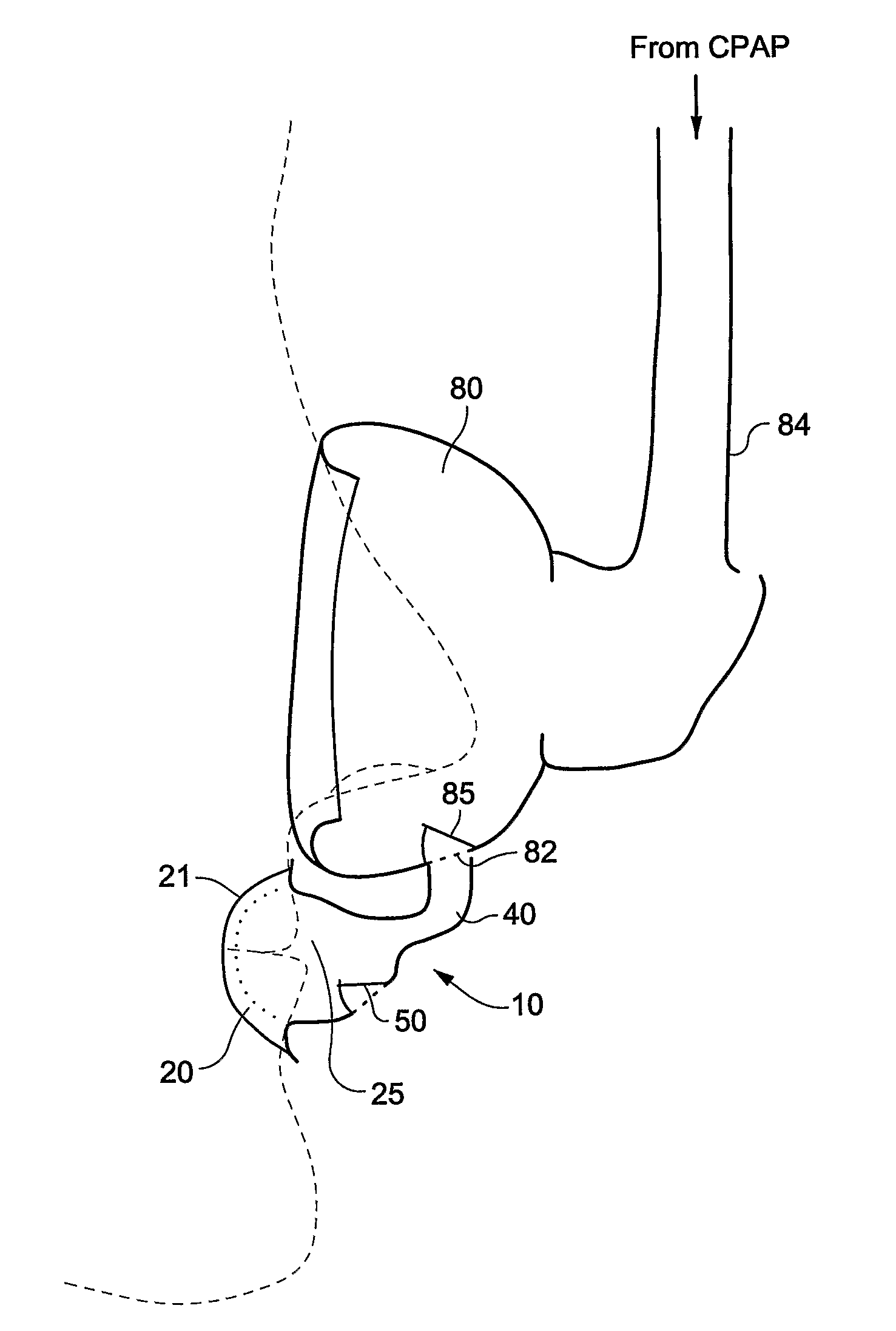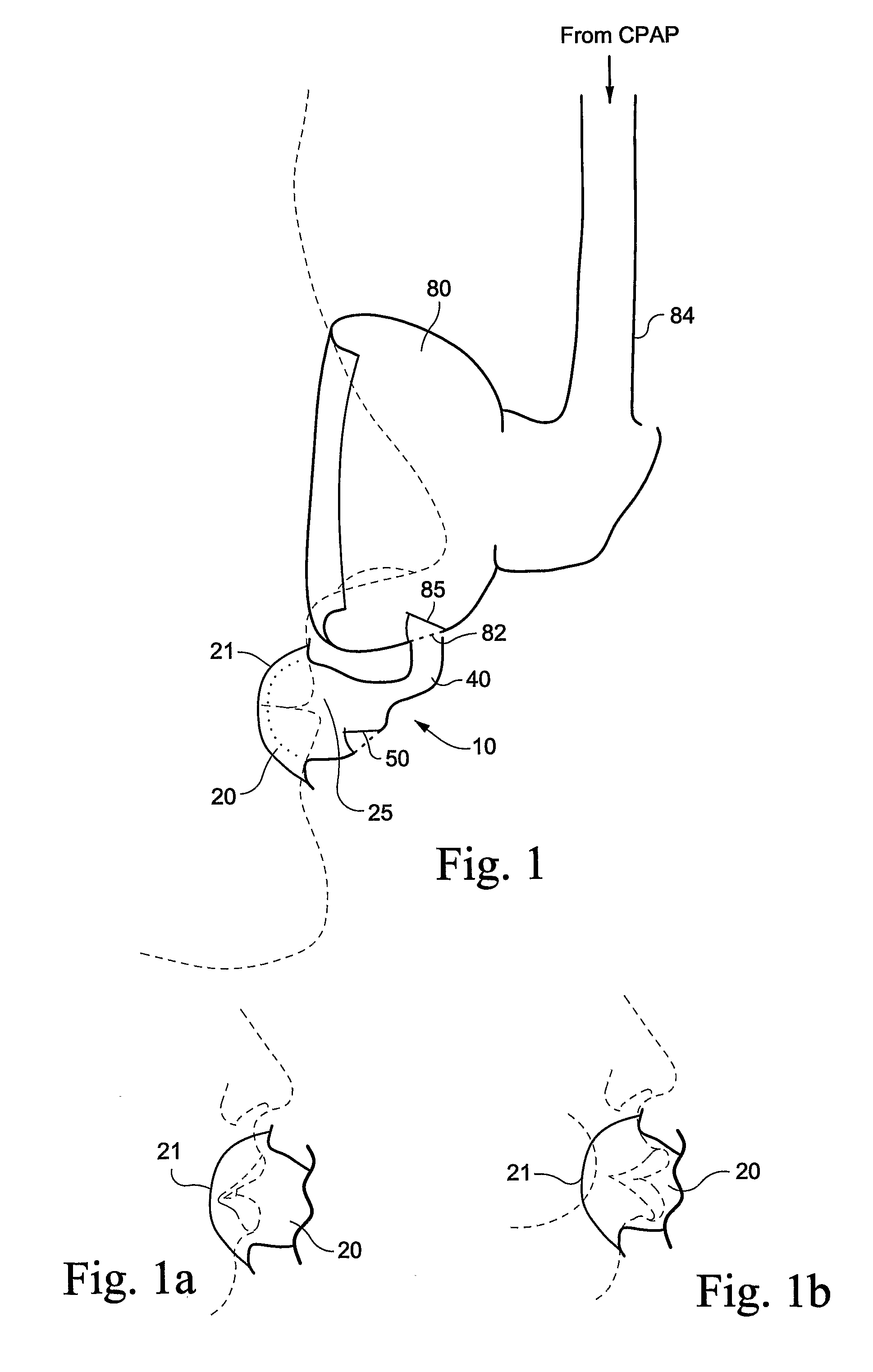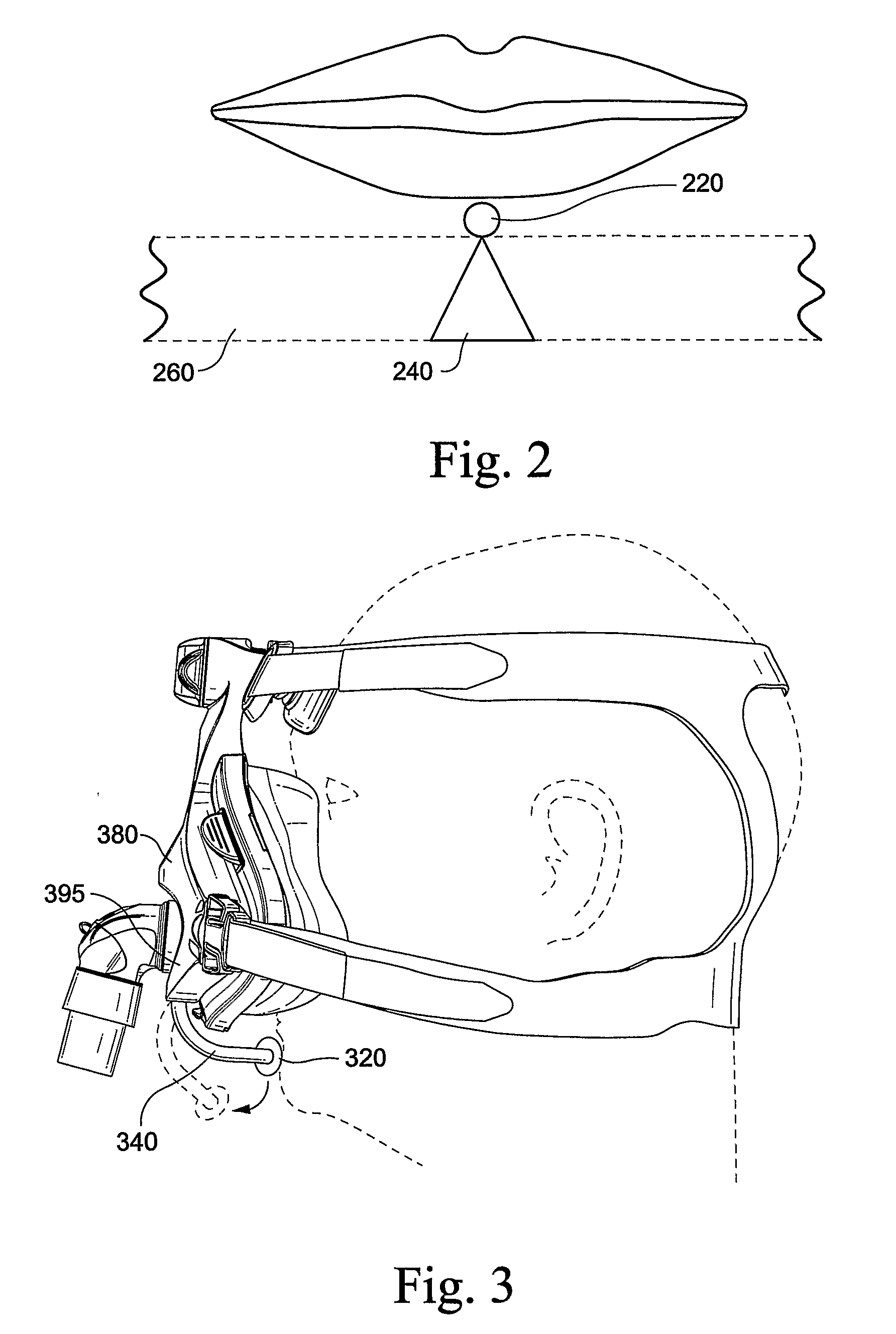Mask system
a mask and mask technology, applied in the field of mask systems, can solve the problems of masks that are uncomfortable for patients, do not comply with therapy, and reduce comfort, so as to reduce the likelihood of a patient having obstructive apnea, reduce the treatment pressure required, and not increase the apnea-hypopnea index of patients
- Summary
- Abstract
- Description
- Claims
- Application Information
AI Technical Summary
Benefits of technology
Problems solved by technology
Method used
Image
Examples
Embodiment Construction
[0041]It has been found that upper airway resistance during sleep and the propensity to obstructive sleep apnea are significantly higher when patients breathe through their mouth than when they breathe through their nose. See “Effect of nasal or oral breathing route on upper airway resistance during sleep”; M. F. Fitzpatrick, H. McLean, A. M. Urton, A. Tan, D. O'Donnell, H. S. Driver. #ERS Journals Ltd 2003; 22: 827-832.
[0042]This situation can lead to patients requiring higher treatment pressures when using full-face masks (i.e., masks that deliver gas to the mouth and nose of the patient) to overcome airflow limitation compared to treatment pressures using nasal masks. Also, the full-face mask has to be held firmly against the cheeks and the lower jaw to seal. Such backward pressure on the lower jaw can cause discomfort and / or pain in the temporomandibular joint as the lower part of the full-face mask is tightened to effect a seal. Backward movement of the lower jaw can also reduc...
PUM
 Login to View More
Login to View More Abstract
Description
Claims
Application Information
 Login to View More
Login to View More - R&D
- Intellectual Property
- Life Sciences
- Materials
- Tech Scout
- Unparalleled Data Quality
- Higher Quality Content
- 60% Fewer Hallucinations
Browse by: Latest US Patents, China's latest patents, Technical Efficacy Thesaurus, Application Domain, Technology Topic, Popular Technical Reports.
© 2025 PatSnap. All rights reserved.Legal|Privacy policy|Modern Slavery Act Transparency Statement|Sitemap|About US| Contact US: help@patsnap.com



